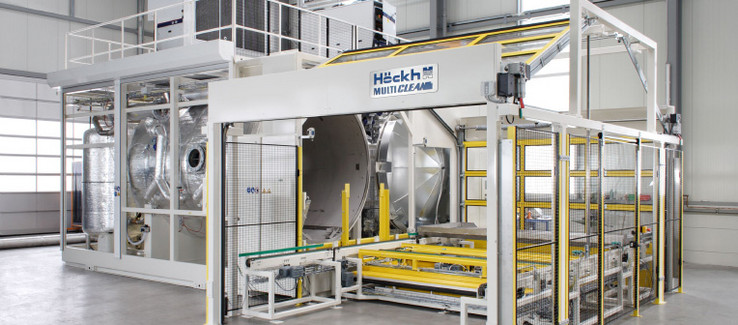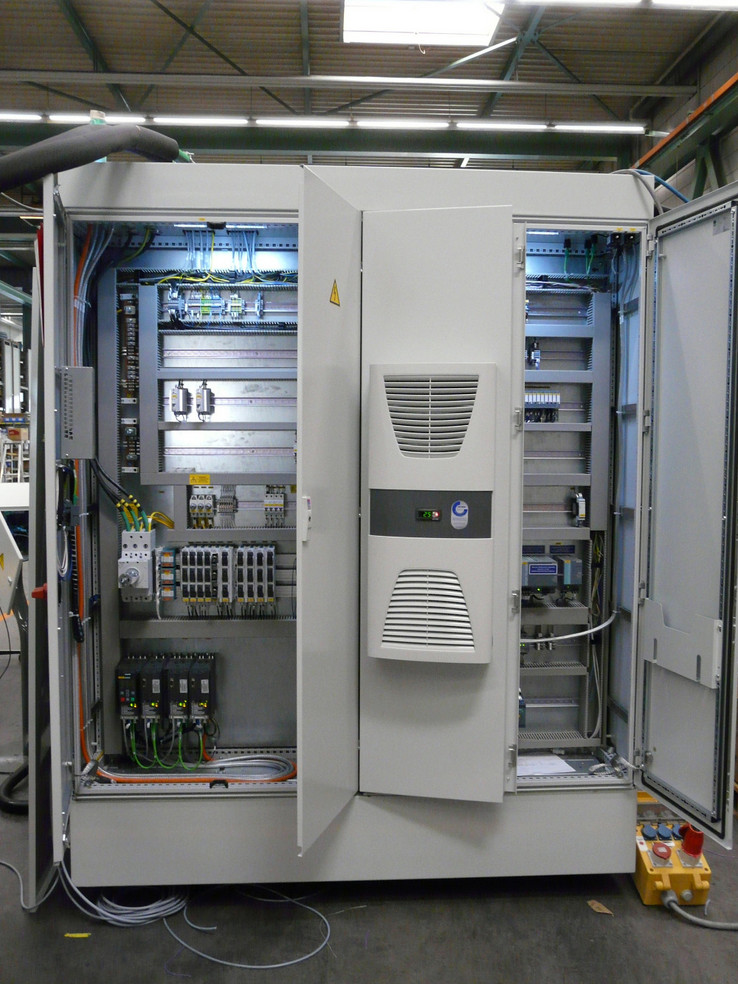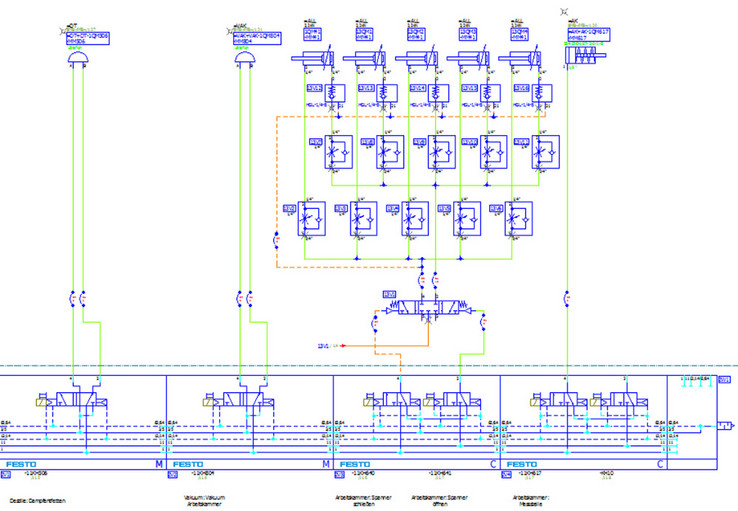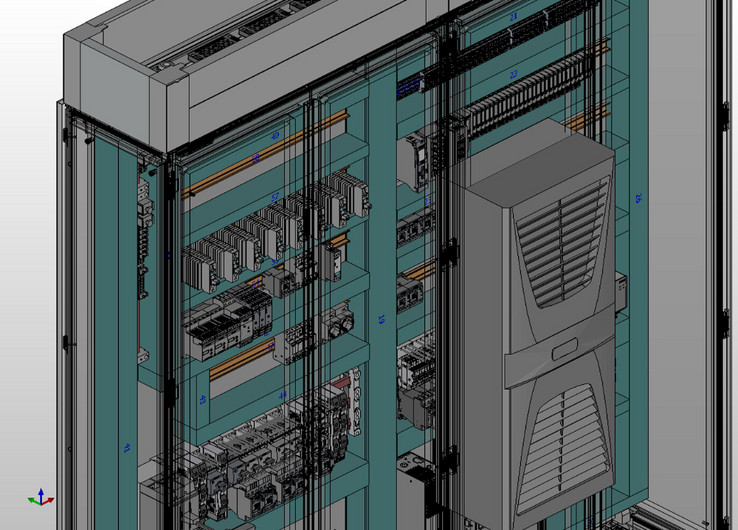Good (pre)-planning is half the job
Höckh Metall-Reinigungsanlagen GmbH produces automated plants for industrial parts cleaning.
Höckh Metall-Reinigungsanlagen GmbH is located in Neuenbürg in the German Black Forest and produces automated plants for industrial parts cleaning. The main mechanical and electrical engineering design procedures are also as automated as the cleaning of parts such as engine components. Design automation is based on an integrated CAE system using EPLAN Preplanning as the starting point in product development. Medical instruments, blades from aircraft jet turbines and engine components are just some examples of the broad range of parts that Höckh plants clean. The plant designs are similarly broad including procedures for the in-feeding of parts. Only the core process process engineering remains relatively similar.
Each major system is a one-off
CEO Michael Höckh: "Many customer needs cannot be met with standard plants. Over the past 10 years our company has therefore invested heavily in the engineering of special plants". Each large-scale plant with the brand name Multiclean is therefore a one-off. The challenge facing Höckh was to standardise design processes as far as possible to save time and increase efficiency. This is a challenge which the company has met in a very ambitious and successful way. Designers in the past already had access to an EPLAN database which enabled components to be selected using function templates. The system was adapted to Höckh's specific needs and functioned extremely well, being used across the different disciplines. The database already structured data from flow diagrams to enable automation of much of the electrical design processes. With the launch of EPLAN Preplanning, even more automation options became available.
In the beginning: a blank screen
EPLAN Preplanning now provides designers with a basic engineering tool enabling project data to be transferred into EPLAN Platform with no media breaks. This is a further step in enabling the automation of many individual tasks, with the required data and links being established using Preplanning. This may sound highly abstract but the benefits are plain to see from the way design is now being performed at Höckh. Changes brought about by the new approach are apparent right from the very first step in a design project. Fabian Camek, head of electrical design: "According to the principles of variant design, we used to begin by searching for a plant that was as similar as possible. We now start with a blank screen". But the screen quickly becomes filled with structures and charts. The biggest benefit is that the structures enable data to be generated for both design and administrative purposes: "We have defined many clever macros which significantly simplify downstream engineering steps".
The difference is in the preplanning
An example. If a designer inserts a pump into a flow chart from EPLAN Preplanning, he will be asked to specify the motor capacity and the required control unit (frequency changer, soft starter, direct starter). In pre-planning, the necessary components – which have already been recorded for the different assemblies and modules – can be selected using the CAE software, including cable diameters and power dissipation, which will be required only later for thermal computations. This is an unusual approach but it saves significant time in detail engineering. However, it does require a database which in turn requires a lot of initial time, effort and intelligence. Fabian Camek: "For all the main functions and components, we have defined macros and value sets".
At its core: a database
Design processes at Höckh are interdisciplinary so macros are defined even for complex mechanical components such as tanks. Direct links exist to mechanical and electrical engineering via a central database. This applies also to fluid power engineering which is performed using EPLAN Fluid. The multitude of electro-pneumatic valve terminals used in every Multiclean plant can be easily integrated using drag-and-drop.
Standardisation and automation
Höckh has therefore taken a major step to achieve its objective of automated design – many of the electrical engineering processes themselves take place automatically. Fabian Camek gave several examples: "EPLAN identifies outputs using PLC data and numbers them automatically. Device tags and clear text labelling for pneumatics are also generated automatically". Obtaining the right documentation no longer needs to burden down designers. Bills of materials as well as the documentation required for parts procurement can be generated automatically and in the language required. The consistent streams of data can be used beyond design. Kai Klussmann, head of mechanical design: "All material requirements and order lists for procurement are obtained from EPLAN and can be processed in our ERP system without undergoing any media breaks". This applies also to delivery times, availability and the prices of purchased parts. Storage locations for parts at Höckh have also been established within EPLAN Preplanning. Procurement of required parts can be performed directly online because order lists contain each article’s barcode. Cross-departmental procedures are simplified by electrical design overview lists automatically generated within EPLAN Electric P8. Fabian Camek: "The software programmer does not even need to view the schematic because individual functions are determined from bus lists".
Virtual control cabinet design
Designers at Höckh are just as efficient at designing control cabinets. EPLAN Pro Panel is used here. The positioning of components, installation spaces and clearances are all predefined as well as cutting lists for cabling ducts and drilling plans for NC processing. This approach enables design times for control cabinet layouts to be almost halved.
Cross-disciplinary design
From Höckh's point of view, a cross-disciplinary approach is vital to save time and eliminate errors in the design of purpose-built mechanical systems. Michael Höckh: "The database has been created in close cooperation between electrical and mechanical design. We have combined our expertise and created a knowledge base in the true sense of the term. We are now reaping the benefits from it". Several plants using this method have already been designed, so those responsible know what they are talking about.

Satisfied with integrated design using EPLAN Preplanning: CEO Michael Höckh (left) and Fabian Camek, head of electrical design (right).
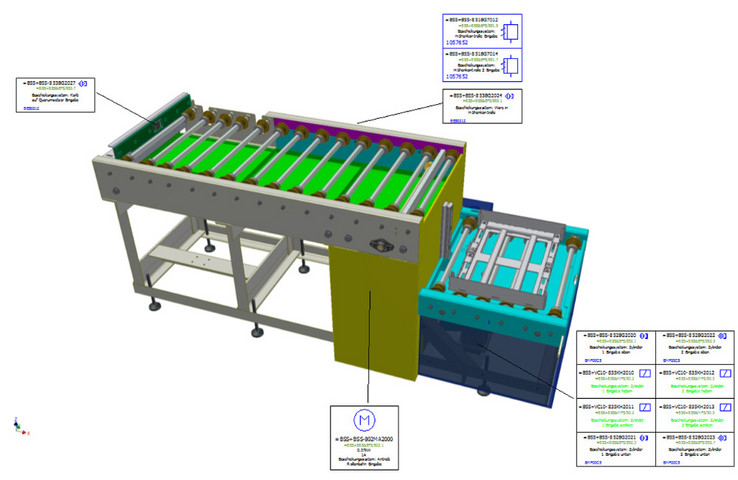
At the first stages of design, all data required for mechanical, electrical and administrative purposes is set up for the required components.
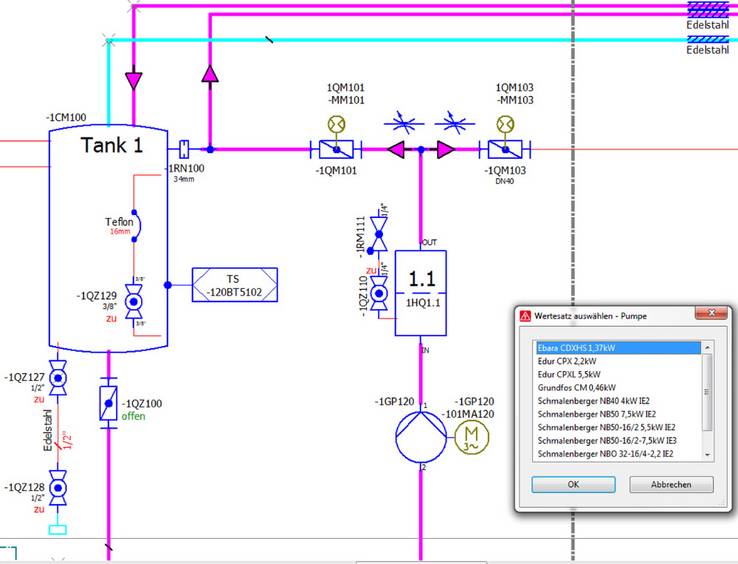
Flow chart (R&I) in EPLAN Preplanning: In pre-planning, the necessary components – which have already been recorded for the different assemblies and modules – can be selected including cable diameters and power dissipation, which will be required only later for thermal computations.
© Höckh Metall-Reinigungsanlagen GmbH


